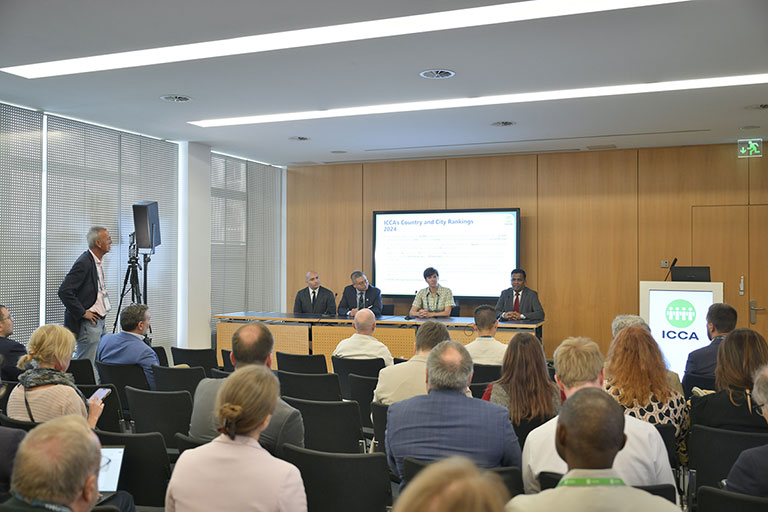Although it hosted eight more international meetings in 2024, Australia fell from 13th in 2023 to 17th in 2024. This appears largely due to a surge in meetings hosted in China, Brazil, Austria and Belgium, all of whom moved ahead of Australia in the rankings, released at IMEX Frankfurt this week.
China was the biggest mover in the top 20, hosting 79 more international association meetings in 2024 compared to 2023 and moving from 18th place to 11th. This move is unsurprising given China maintained strict pandemic border measures until early 2023.
New Zealand hosted slightly fewer qualifying meetings in 2024 compared to 2023 – 51 meetings in 2024 compared to 56 in 2023 and slipped from 43 to 48th place.
With the exception of Melbourne, Perth and Canberra, most Australian cities fell in the city rankings too.
Sydney, which held one less qualifying meeting in 2024, fell from 25 to 30, but still held the top city ranking for Australia. Brisbane held three fewer meetings and fell from 76 to 94. Adelaide fell from 150 to 219 with four fewer meetings, Darwin slipped from 270 to 323 with one less meeting. Both the Gold Coast and Hobart dropped by more than 100 places, with five and three fewer meetings respectively. With a reduction of six meetings, Cairns also fell substantially, from 212 to 432.
On the flipside, Melbourne moved up four places from 35 to 31, with 12 additional meetings. Melbourne also came in fifth globally for the average number of participants per meeting, with an average of 794 delegates per event.
Meanwhile, Perth rocketed up the rankings, from 228 in 2023 to 105 in 2024, hosting more than double the number of meetings in 2024 compared to 2023 – 24 versus nine.
In New Zealand, the three major cities all slipped, although falls for Christchurch and Wellington were minimal, with the former increasing its number of meetings by one and falling just three spots from 196 to 199. Wellington maintained its number of meetings but fell from 270 to 293. Auckland’s fall was larger, from 84 to 112, with four fewer meetings hosted.
Globally, the rank of the top three countries remained unchanged, with the USA topping the list again, followed by Italy in second and Spain third. Likely due to its role as an Olympic host in 2024, France fell from fourth to sixth position and Germany and the UK each moved up a spot to claim ranks four and five. Japan, the Netherlands, Portugal and Canada rounded out the top 10.
In the city rankings, Vienna reclaimed the top spot, while Lisbon came in a close second, with just one less meeting. Singapore was third, followed by Barcelona, then Prague, Paris – who was first in 2023 – Seoul, Bangkok, Rome and Athens.
Dubai topped the list of cities with the highest average attendance per meeting, averaging 899 participants per conference.
Although ICCA appeared to see a rise in the number of eligible meetings for its rankings, it also notes an overall slump in the number of association meetings taking place around the world in 2024 and that association meeting quantities are still well off what they were at a 2019 peak.
Medical conferences are the top meeting sector, by some way, with 17 per cent of all meetings centred on medical sciences. Technology meetings come in second, with a 14 per cent share, while science congresses are just behind on 13 per cent. Industry and education events round out the top five, with six per cent each. These sectors with the largest number of meetings have not changed for more than a decade.
Geographically, Europe still dominates the world of association meetings, hosting 56 per cent of meetings.
Asia Pacific comes in second with 18 per cent of meetings. Oceania is considered separately from APAC, hosting three per cent of meetings, in line with Africa and just above the Middle East, which hosts two per cent.
Meanwhile, North America has a 10 per cent share and South America has an eight per cent share.




















